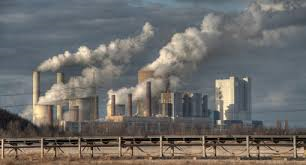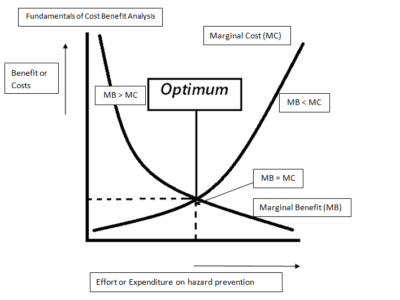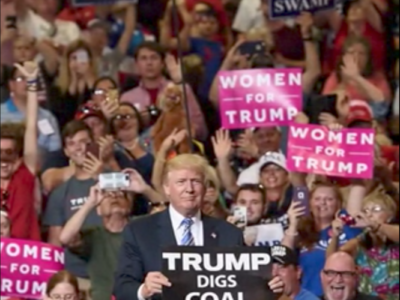Industry Will Try To Keep The Clean Power Plan From Taking Effect Pending Court Decision on Its Legality
Lobbyist Spin Has Begun
 It’s no secret that the minute the Clean Power Plan is finalized (expected in the next couple of months), industry will sue to invalidate it. But before a court decides whether the Plan — which is designed to cut carbon emissions from the power sector by 30 percent — is legal under the Clean Air Act, industry will try to keep it from ever going into effect. In legal parlance, industry will seek an order from the D.C. Circuit Court of Appeal to “stay” the implementation of the rule so states and power plants don’t have to comply with it until — in all likelihood – the Supreme Court decides whether the Clean Power Plan is valid. Jeff Holmstead, who frequently represents industry in environmental challenges and served in the George W. Bush EPA, is already on a publicity jaunt arguing that the Supreme Court’s decision last week invalidating the power plant air toxics rule makes a stay more likely.
It’s no secret that the minute the Clean Power Plan is finalized (expected in the next couple of months), industry will sue to invalidate it. But before a court decides whether the Plan — which is designed to cut carbon emissions from the power sector by 30 percent — is legal under the Clean Air Act, industry will try to keep it from ever going into effect. In legal parlance, industry will seek an order from the D.C. Circuit Court of Appeal to “stay” the implementation of the rule so states and power plants don’t have to comply with it until — in all likelihood – the Supreme Court decides whether the Clean Power Plan is valid. Jeff Holmstead, who frequently represents industry in environmental challenges and served in the George W. Bush EPA, is already on a publicity jaunt arguing that the Supreme Court’s decision last week invalidating the power plant air toxics rule makes a stay more likely.
Industry wants a stay of the Clean Power Plan because it will take several years for courts to resolve its legality and in the mean time, if the rule goes into effect, states will have to draw up extensive plans demonstrating how they will cut greenhouse gas emissions from the electricity sector. Those plans will be due in the Summer of 2016, though states can get extensions under certain circumstances. The plans are likely to include energy efficiency programs, reductions in the use of coal as a fuel for electricity, increases in renewable energy and other measurers to clean up the electricity sector. Once the plans are in place, utilities will need to figure out how to to comply with them. A stay would freeze all that activity and allow power plants to continue emitting carbon dioxide and other greenhouse gases while they fight a court battle.
The implementation of the mercury rule shows why industry will want a stay of the Clean Power Plan. The rule went into effect in 2012, though industry had up to four years to comply with it. Last week, the Supreme Court struck the mercury rule down in Michigan v. EPA (Holmstead played a large role in keeping EPA from regulating mercury stringently while heading the air program in the Bush EPA, with critics alleging that the administration downplayed scientific evidence about the toxic effects of mercury pollution). By the time of the Supreme Court ruling, most utilities had already complied with the rule or made investments necessary to meet the compliance date so its invalidation doesn’t have much of an effect in the real world (and the rule is likely to be reissued and upheld anyway).
So will industry succeed in getting the Clean Power Plan stayed pending a decision on the merits of the case? Holmstead himself has said that stays are “a pretty big deal” and “rare,” but the D.C. Circuit did stay the implementation of another important Clean Air Act regulation, the Cross State Air Pollution rule, in 2011 before issuing a decision invaliding the rule in 2012. The Supreme Court ultimately reversed the D.C. Circuit’s merits ruling and upheld the Cross State rule but the stay remained in place pending the Supreme Court decision. In issuing the stay of the Cross State rule, the D.C. Circuit relied on the following test, set forth in Washington Metropolitan Area Transit v. Holiday Tours:
(1) Has the petitioner made a strong showing that it is likely to prevail on the merits of its appeal? Without such a substantial indication of probable success, there would be no justification for the court’s intrusion into the ordinary processes of administration and judicial review. (2) Has the petitioner shown that without such relief, it will be irreparably injured? . . . (3) Would the issuance of a stay substantially harm other parties interested in the proceedings? . . . (4) Where lies the public interest?
It is, of course, difficult to know how the D.C. Circuit would apply this test in a challenge to the Clean Power Plan. In fact in the order issuing the stay of the Cross State Rule, the court didn’t even discuss how it weighed these issues and simply stayed the rule. One big difference between the Cross State Air rule and the Clean Power Plan, however, is that when the D. C. Circuit stayed the Cross State rule, a different rule remained in place that regulated cross border air pollution, called the Clean Air Interstate Rule. In fact the court of appeals took comfort — in first staying and then ultimately vacating the Cross State rule — that the Clean Air Interstate Rule would remain in effect and would “preserve the environmental values” the rules sought to protect in reducing air pollution that was crossing state borders. There is no such backstop with the Clean Power Plan. Without it, the power sector, which is the largest source of U.S. greenhouse gases, will continue to spew carbon emissions into the atmosphere. The public interest in beginning to reduce those emissions is huge: the longer we wait to reduce emissions the harder it will be to keep global temperatures from rising more than 2 degrees. Moreover the Clean Power Plan is the centerpiece of President Obama’s global commitment to reduce U.S. greenhouse gases by 26-28 percent by 2025, a commitment that the U.S. has submitted to the United Nations in anticipation of the Paris negotiations in December of this year. A stay would destroy the U.S.’s ability to meet its commitments. That’s a pretty big hit to the public interest.
One other important point. Holmstead is arguing that Michigan v. EPA makes a stay more likely. I don’t buy his argument. To repeat an argument I’ve made previously,
The Clean Power Plan will rise or fall based on statutory language included in a section of the Clean Air Act, Section 111d, that the Court simply hasn’t considered before. Michigan v. EPA, in other words, tells us very little about what the Court thinks Section 111d means in deciding whether the Clean Power Plan is legal.
Holmstead’s job is, of course, to pull out all the stops for the coal industry to minimize environmental regulations. Getting a stay issued so the Clean Power Plan doesn’t go into effect is now at the top of his agenda.
Reader Comments
One Reply to “Industry Will Try To Keep The Clean Power Plan From Taking Effect Pending Court Decision on Its Legality”
Comments are closed.






Ann said;
“…..It’s no secret that the minute the Clean Power Plan is finalized (expected in the next couple of months), industry will sue to invalidate it….”
Dear Ann,
There is a very good possibility that the Clean Power Plan will not be finalized in the next couple of months because we are working very hard to stop it. So it may not be necessary for industry to sue to invalidate it. Thankfully, the EPA seems to be getting the message and it is slowly beginning to back-off. Hopefully the Clean Power Plan will simply fade away into obscurity and be forgotten about altogether. That’s progress.
Have a good day.